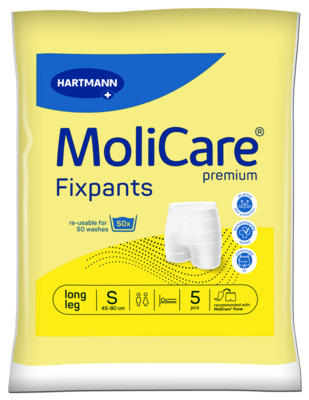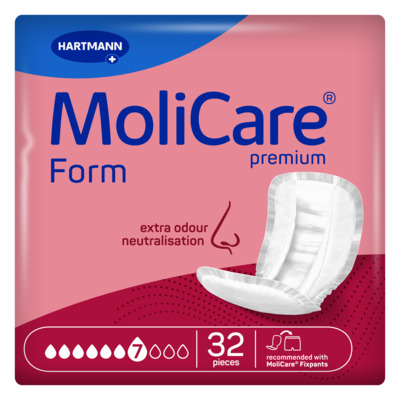Active living
Pelvic floor exercises and Kegel exercises for women with incontinence
For women with incontinence, knowing how to do pelvic floor or Kegel exercises are important for improving overall quality of life, as well as mental and physical health. The pelvic floor is the key to controlling the flow of urine out of the bladder, and if the pelvic floor muscles are weakened, this can lead to leaking incontinence. In this article, you will learn about the purposes behind pelvic floor and kegel exercises, as well as their benefits for managing incontinence.

elderly woman making pelvic floor exercises (Image source: PAUL HARTMANN)
What is a pelvic floor?
Your pelvic floor is a band of muscles and ligaments spanning from the pubic bone to the tailbone and across your pelvis. These muscles provide crucial support for your bladder, uterus, and bowel, and control the opening of your bladder and rectum. When the functioning of the pelvic floor is disrupted, this can lead to a hypertonic pelvic floor, which involves a constant spasming and/or contraction of the lower pelvic muscles.
For extra security during these Kegel exercises, be sure to wear incontinence products for women or even pull up pants for any sporting activity.
Unlock the power of your pelvic floor
Functions of the pelvic floor muscles
The pelvic floor muscles are more integral for the functioning of your body than you might imagine, and keeping these in good condition is essential to ease incontinence. Whilst incontinence cannot be prevented or stopped, having strong pelvic floor muscles will heavily reduce the risks of urine and bowel leakages, especially if you are worried about urine leakage when coughing. Other functions of the pelvic floor muscles include:
Support the bladder and bowel
Promote bladder and bowel function
Prevent unintentional urine leakage (incontinence)
Support sexual function
Why pelvic floor exercises is important to women
During pregnancy or after giving birth, women commonly experience weakened pelvic floor muscles. This is due to the supportive role of these muscles, as they hold the uterus and baby in place. Additionally, pregnancy hormones loosen the muscle group in the lower pelvic area to prepare the body for childbirth. To learn more about managing incontinence during pregnancy, explore our informative article on pregnancy and incontinence.
Furthermore, improving your pelvic floor muscles with Kegel exercises can aid with constipation, chronic coughing, and even being overweight.
You may benefit from performing Kegel exercises if you experience any of the following:
Minor urine leaks when coughing, laughing, or sneezing.
Have the urgent, sudden need to urinate.
Problems after pregnancy and childbirth.
Leaks during sporting activities.
Overflow incontinence.
Identifying your pelvic floor muscles
Some people may struggle on how to find their pelvic floor muscles. Never fear, because here are some steps on how you can easily find your pelvic floor muscles before performing kegel exercises:
- Start by sitting: Sit with knees apart. Imagine stopping a bowel movement; this activates your back passage muscles. Focus on the squeeze without moving your buttocks or legs. You should feel the muscles tightening.
- Stopping urine flow (hypothetically): Pretend you're halting urine mid-flow. Use the same muscles as in step 1. Remember, don't actually do this during urination as it could lead to health issues.
- Combining actions: Try to tighten muscles around your back passage, vagina, and front passage simultaneously, as if stopping wind and urine at once. Avoid using other muscles (like legs or buttocks). A slight tummy tuck is okay, but most effort should come from the pelvic floor.

When to perform Kegel exercises for women
Performing Kegel exercises to aid pelvic floor muscles can be done regularly; however, the key is to make the activity as fun and be as relaxed as possible. You shouldn’t have to perform it just for the sake of it; such as this case for body training in general and other sports with incontinence. Here are some tips of what to do prior to performing Kegel exercises for women:
Choose a quiet time and place where you can focus on the exercises without distractions.
Wear loose workout clothes,
Stop eating at least an hour before exercising,
Empty your bladder beforehand.
How to do pelvic floor exercises
Now that we have underlined the purposes behind pelvic floor exercises and what to do prior to performing the exercise, here is how to do them. When you're ready to begin, follow the instructions below regarding pelvic floor exercises step by step and repeat them three to five times. Here is some general guidance on what to do, and then we will look at the exercises you can perform with Kegels.
- Hold each active position for 3-10 seconds, gradually increasing the duration as you become more comfortable.
- Make sure to relax for twice as long as you hold the active position at the end of each repetition.
- It's important to listen to your body and never push yourself to the point of pain. With regular training, you'll start to see results.
- Prioritise self-care with regular pelvic floor training to alleviate incontinence symptoms. To improve your comfort, check out our website for a wide range of incontinence products with different absorbances, to give you a comfortable and confident feeling during exercise.
However, it's important to remember that pelvic floor exercises are not a substitute for regular examinations. If you are still concerned about performing Kegel exercises for overactive bladders, you can contact us today; alternatively, get in touch with your healthcare professional, gynaecologist or urologist.
Be wary: you should not need to make a habit of performing Kegel exercises for controlling your urine stream as this may cause further complications. In fact, performing these whilst emptying the bladder can prevent the bladder from being completely empty, therefore provoking the risk of a urinary tract infection.
How to strengthen the pelvic floor
Signs of a strong pelvic floor include:
Rare or no incontinence incidents.
No frequent urges to urinate or defecate.
Feeling in control of your bladder and bowels.
Ability to perform Kegels with ease.
How to squeeze pelvic floor muscles
Squeeze your pelvic muscles firmly but avoid tensing your thighs, back, buttocks, or abdomen. This ensures you're exercising the correct muscles. Remember to breathe normally during the exercises, perhaps counting aloud to maintain your breathing pattern.
Best positions for Kegels
Kegel exercises can be done lying down, sitting, or standing. Start by lying down if your pelvic muscles are weak, then progress as they strengthen.











